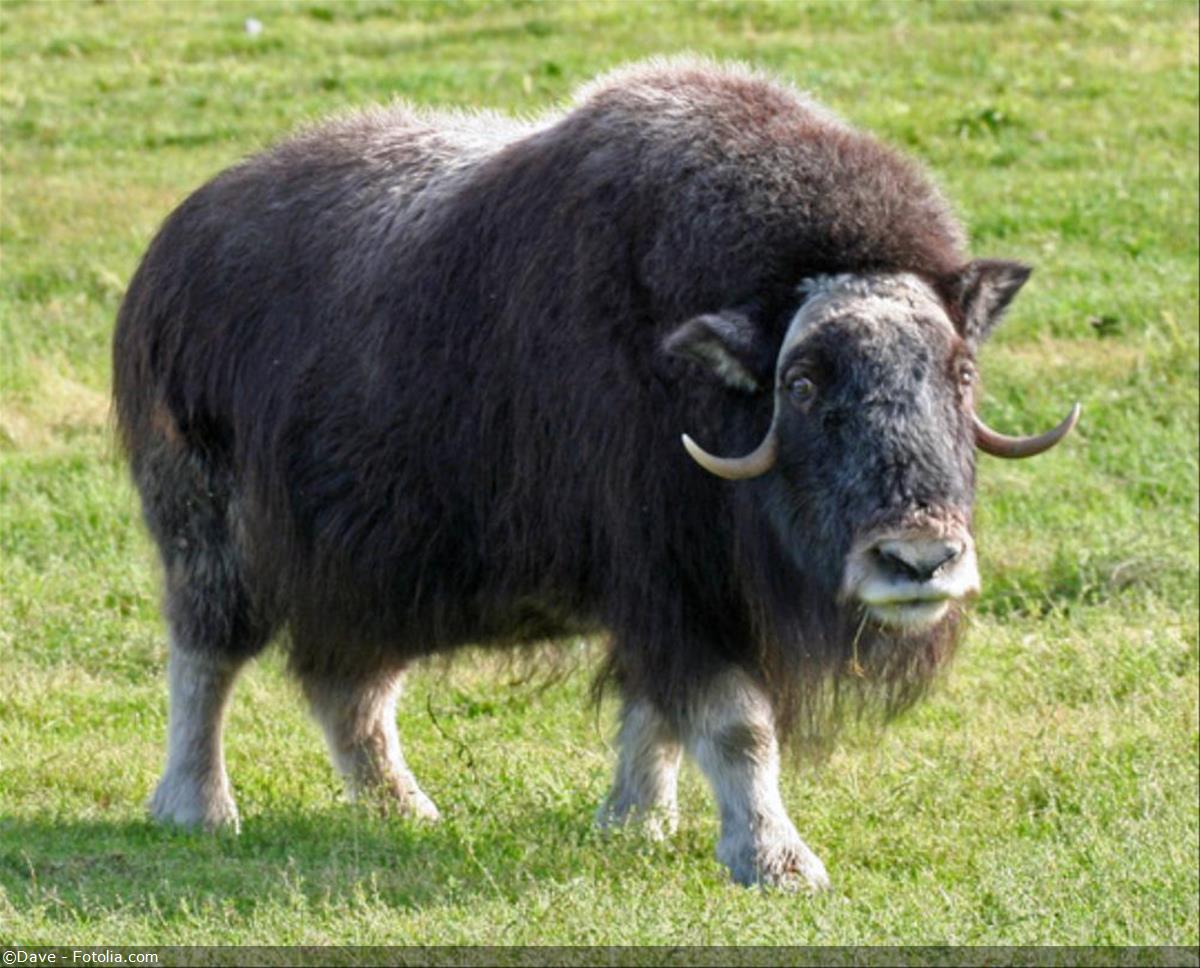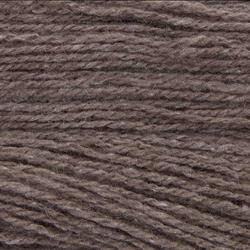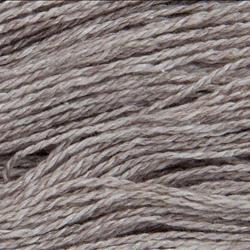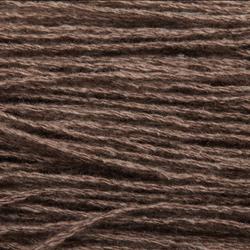Qiviut
The MUSK OX is an arctic mammal. Reminiscent of the mammoth, it seems to be a relic of prehistoric times. Even though it looks as if it belongs to the bovine family, it is actually closer related to goats and sheep than to oxen. Female and males have long, curved horns. Adults have a shoulder height of app. 4.6 ft (1.40 m) with a body length of about 8 ft (2.50 m). They weigh at least 440 lb (200 kg) and can exceed 880 lb (400 kg). Musk oxen are social, usually living in small herds of 10 to 20 animals.
The musk ox lives in Alaska, Canada and Greenland. In the 1930, they were hunted almost to extinction. Still today, they are considered an endangered species. However, a small annual hunt, controlled by the government, is permitted. It provides the natives with meat, hides and wool. The Yupiit people of Alaska call this rare animal oomingmak, which means "the bearded one".
The musk ox can only survive in very cold climate. In fact, captive herds must be protected from overheating, when the temperature rises above 70°F (21° C). Against the freezing cold they are protected by their warm fur coat, consisting of long, thick guard hair and a luscious, very soft and fine underwool. This precious down is called QIVIUT. It is eight times warmer than sheep wool and as fine and soft as cashmere, with a fibre measuring 11 to 13 microns.
The musk ox lives in Alaska, Canada and Greenland. In the 1930, they were hunted almost to extinction. Still today, they are considered an endangered species. However, a small annual hunt, controlled by the government, is permitted. It provides the natives with meat, hides and wool. The Yupiit people of Alaska call this rare animal oomingmak, which means "the bearded one".
The musk ox can only survive in very cold climate. In fact, captive herds must be protected from overheating, when the temperature rises above 70°F (21° C). Against the freezing cold they are protected by their warm fur coat, consisting of long, thick guard hair and a luscious, very soft and fine underwool. This precious down is called QIVIUT. It is eight times warmer than sheep wool and as fine and soft as cashmere, with a fibre measuring 11 to 13 microns.











